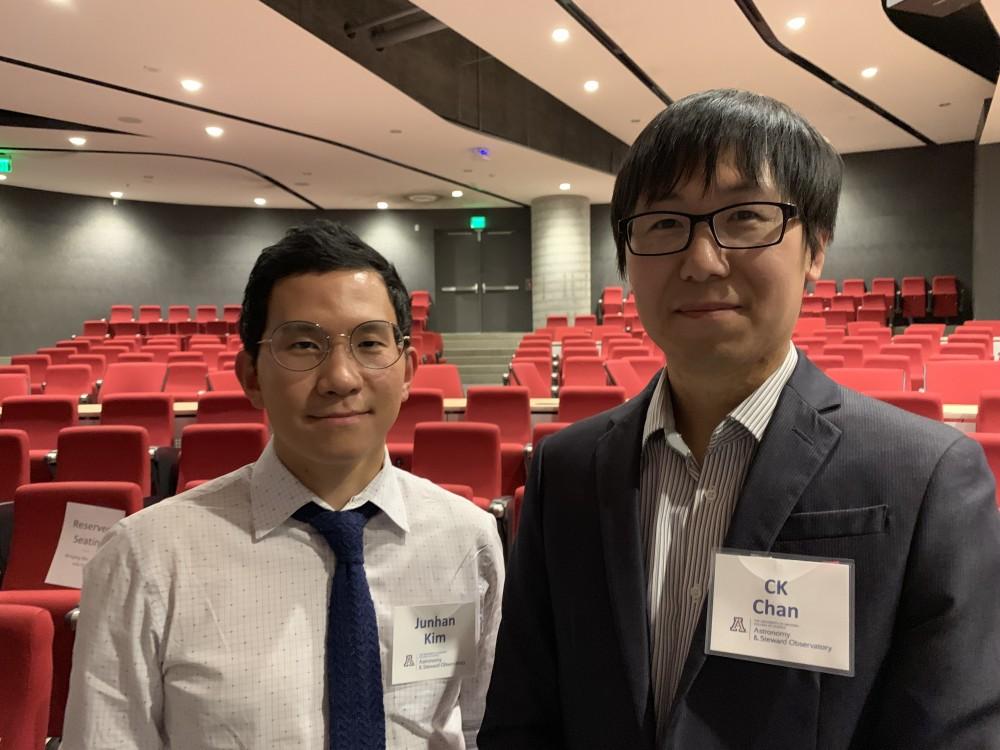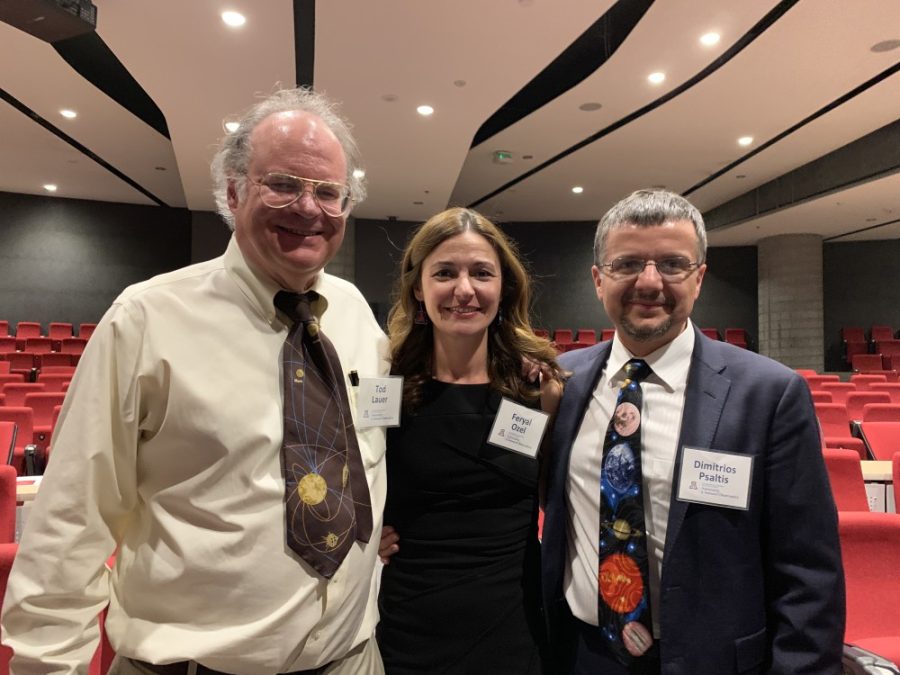The “Bringing Black Holes into Focus with the Event Horizon Telescope” lecture was held the evening of Wednesday, April 17, in the Environmental and Natural Resources 2 building at the University of Arizona.
The lecture featured some of the Arizona team involved with the scientific efforts of the Event Horizon Telescope to obtain the first photo of a black hole. They discussed their roles in the work, the components necessary for taking a photo of a black hole and Einstein’s Theory of General Relativity.
“We really wanted to invite everybody today because we wanted to share with you the actual story of what it took to take that picture and, more importantly, the very important role the University of Arizona played in it,” said Dimitrios Psaltis, project scientist of the Event Horizon Telescope and astronomy professor at the UA.
Along with Psaltis, the speakers at the lecture included Tod Lauer, National Optical Astronomy Observatory astronomer; Junhan Kim, graduate student in the Department of Astronomy and Steward Observatory; Lia Medeiros, graduate student researcher at the Steward Observatory and National Science Foundation fellow; Dan Marrone, associate professor for the Department of Astronomy and Steward Observatory; Feryal Özel, professor of astronomy and physics, and Chi-Kwan Chan, assistant astronomer for the Department of Astronomy and Steward Observatory.
Lauer first explained the target of the project to the audience: M87, the galaxy where the black hole was located. He said the galaxy is relatively close to us and can even be seen with a telescope on a clear night.
In order to see this black hole with the EHT, Marrone said, they created a telescope that was 10 billion wavelengths across, “a telescope the size of the earth.” Marrone said they did this by synthesizing the telescope out of many telescopes in various locations. The telescopes involved are scattered all across the Earth, in Antarctica, Spain, Chile, Mexico, Arizona and Hawaii.
“This collection of telescopes obviously spans the entire globe, and so that’s the effective size of our telescope when we’re looking at M87,” Marrone said.
In his portion of the lecture, Kim explained the journey he and other scientists made to the South Pole in Antarctica to modify that telescope, because it did not have detectors necessary for the EHT observation. Kim said the South Pole telescope was built to do completely different science, so they had to make the changes themselves.
“We designed and built the specialized receiver for the South Pole Telescope here at U of A,” Kim said. “This has been a [multiple] year project, starting in 2013.”
Kim said he spent four summer seasons in the South Pole reassembling and installing the receiver. The last season he was there was about three months ago.

Psaltis said that in early 2017, all the telescopes involved in the project were equipped with everything needed to make the black hole discovery. In 2017 from April 5 through 11, teams all across the world went to their telescopes and performed the first observations. Psaltis said they needed good weather conditions in every part of the world at the same time, and that’s exactly what happened.
“We observed for five days almost straight over the course of the week,” Psaltis said. “We collected a vast amount of data.”
They took the data and, after a series of processing it, were able to generate images. From August 2018 to April 2019, they worked on the interpretation of the results and wrote the 250-page peer-reviewed publications in preparing for public announcement.
Psaltis said the very first thing he felt when he saw the photo of the black hole was relief, but a close second was pride.
“Here we are, a number of scientists in the 21st century, connecting all the telescopes around the world, turning them to a galaxy 55 million light-years away and trying to take a picture of a dot and finding exactly what some other scientists predicted based entirely on the power of math and science,” Psaltis said. “Science works … This is the power of the human mind.”
Later in the lecture, Özel discussed Einstein’s theory and whether or not their findings proved that theory right. She said when looking at an image of a black hole, there should be an absence of light at the center and it should leave a ring of light around it.
Einstein’s theory not only predicts the existence of a black hole with those features, it also tells scientists exactly how big the hole should be, how big the ring should be and what the shape of the ring should be, according to Özel.
“The gas around the black hole might be doing any number of crazy things,” Özel said. “But there is one property that doesn’t change, and that is the fact that the shadow itself has to be a circle. As long as we’re working with Einstein’s Theory of General Relativity, it is very, very difficult to change anything about the black hole and make the shadow look anything other than a circle.”
She said if Einstein’s theory is somehow wrong, the black hole could be all sorts of shapes. The black hole, however, was in fact circular.
“With our current data, what we can say is that it is a perfect circle to within 10 percent,” Özel said.
Özel said developing new imaging techniques to get a photo of the black hole in our own galaxy, adding more telescopes to the EHT array and sending telescopes to space to improve the resolution of what can be seen are the next challenges they hope to tackle.
At the end of the lecture, the audience was able to ask questions, get printed photos of the black hole, have their photos signed and take pictures with the scientists.
Follow Quincy Sinek on Twitter















